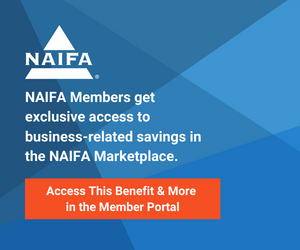LIMRA has launched a training program titled, Recognizing Financial Exploitation, to help train the financial services industry to help detect and deter fraud. The online, scenario-based education program, is a fast and easy way to help financial professionals comply with emerging legislation and regulations.
According to The United States Census Bureau, the U.S. population of the United States is rapidly becoming older. One of their latest projections: Twenty percent of the country’s population will be over the age of 65 by 2030. For the first time in the country’s history, older people are projected to outnumber children.
With this growing senior population, the country will face several challenges. One will be the potential increase of financial exploitation of its senior citizens, which currently costs the country nearly $3 billion annually, according to a MetLife Study.
The newly implemented Senior Safe Act, which President Trump signed into law on May 24, 2018, aims at protecting American seniors from financial exploitation. The law encourages financial services firms to provide “appropriate training to front-line employees and producers, while granting immunity to those that report suspected abuse to regulators and law enforcement authorities.” Recognizing Financial Exploitation will help train the financial services in ways to detect and deter fraud. The online, scenario-based, education program is a fast and easy way to help financial professionals comply with emerging legislation and regulations.
Identifying financial exploitation
What are some of the other ways advisors can use to identify financial exploitation among seniors? We identified three common things to remain alert for when you are working with a senior client:
- Knowledge of Possible Health Issues. Seniors are more likely to develop health-related issues as they get older. Some of these health issues could make it more difficult for older people to keep track of their finances. For example, research indicates that people with dementia are at a greater risk of elder abuse than those without.
- Analyzing Potential Perpetrators. It is important to look at all of the possibilities when assessing potential fraud of a senior client. It is not always done by a stranger. You might be some surprised by the most likely candidates for potential perpetrators on senior citizens. For example, family members (58 percent) are actually the most common criminals in financial exploitation, followed by friends and neighbors (17 percent) and home care aides (15 percent).
- Keeping Information Private. As more people across all generations use the internet for every-day activities, including banking and shopping, there is greater potential for fraud. Seniors may be more vulnerable to scams and other fraudulent behavior because they often have the least experience with technology and the internet. It is common for criminals to use email phishing to target seniors who may be more trusting and likely to provide their personal information. Getting elderly people placed on Do Not Call lists and educating them about not giving out any financial information can help.
For more information, visit www.limra.com.
LIMRA










.png?width=300&height=300&name=CC%202025%20Ad%20(300%20x%20300%20px).png)
.png?width=300&height=600&name=Tax%20Talk%20Graphic%20-%20email%20tower%20(300%20x%20600%20px).png)



.png?width=300&name=NAIFA-FSP-LH%20with%20tagline%20-%20AT%20blog%20email%20ad%20(300%20x%20250%20px).png)
.png?width=728&height=89&name=2024%20Congressional%20Conference%20(728%20x%2089%20px).png)
